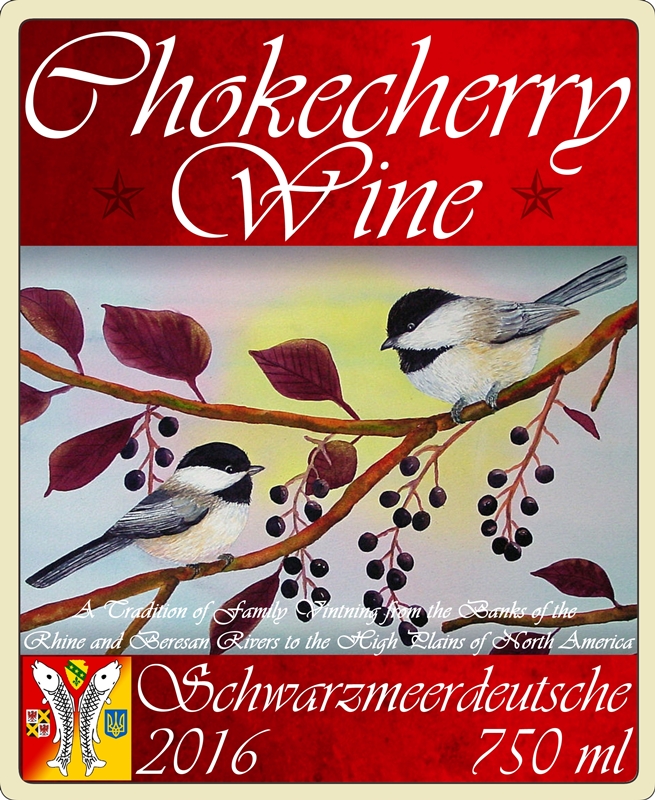Well, my #2 son got into my first batch before it was ready, and to cover his tracks, he replaced a full half of it with water....
I thought of killing him, but decided not to; it's just too damn much hassle, although in the end I might have been able to plead temporary insanity. Instead, I started a second batch of wine on 3 October 2016, using a very slightly-modified recipe:
Chokecherry Wine
3 pounds chokecherries
2.5 pounds sugar
1 cup chopped golden raisins (intended to add body to the wine)
1 teaspoon acid blend
1 teaspoon yeast nutrient
Scant 1/4 teaspoon tannin
1 crushed Campden tablet
1/2 teaspoon pectic enzyme
1 package Montrachet yeast
7 pints Big Spring Water from Lewistown, Montana
As I mentioned, there are a couple of small differences with this batch, compared to my previous batch. I never used any tannin with the first batch, so I tried it this time, for comparison. The amount of chokecherries and sugar is slightly higher this time, but not by much, simply because that's what I had. My goal was a fruit-forward, strong-ish wine.
This time, the boy stayed out of it, and that makes me happy. Over the months, I racked this off the lees once or twice, then put it away to bulk-age. For a month or so, I told myself to forget about it, and after a while, I did!
Somewhere in that time, I re-filled the air-lock a couple of times, and finally, a month or so ago, I put a 38-mm cap on the fermenter and put it in the refrigerator, hoping that it would pull down any vestigial sediment etc. Normally, one would add a fining agent, but I did not do that at this time, since it didn't seem to need it. There was just the tiniest bit of sediment on the bottom; but otherwise, the wine seemed wonderfully clear and had a beautiful colour.
Last night, I bottled this wine, and I am thinking that I really have something nice. The normal, "proper" procedure would be to add a crushed campden tablet (dissolved in a bit of warm water) and a half-teaspoon of sorbate. I did not do that this time, for my own reasons, but might do so in the future; therefore, I am putting down this procedure so that I won't forget.
Anyway, proceeding with the bottling, I washed and sanitised all equipment, then got down to doing it. It was quite easy, thanks to my mini auto-siphon and bottling wand - in fact, it was even easier than bottling beer. One thing I was eager to try was this handy gadget, which turned out to be very easy to use and made corking a breeze:
http://a.co/9P7ZAVw
The are currently unavailable at Amazon, it seems, but can be found here, also:
http://mastervintner.com/master-vintner-mini-corker/
I was expecting to get 4 bottles from the batch, plus a partial fifth bottle; however, I was happily surprised with 5 full bottles. I had just enough left over for a small sample, and it sure was good. The chokecherry came through very well, and I was quite happy to see that it still had the slight, zippy "spiciness" to that I referred to in my post above.
The bottles of chokecherry wine are currently sitting upright, in the dark, while the pressure equalizes and the corks settle in. In a few days, I will store my wine horizontally and leave it alone for a few weeks while the "bottle shock" wears off. I am guessing that when the time comes to sample it, I'll be quite pleased with it. I plan to see how this wine matures over the next year or so, and am hoping for really nice things.
For now, this second recipe that I made looks to be the one to use. I don't see any need for changing it, but will try to improve my methods and practices a bit in the future, including attempting to use some of the additives that can make a good wine even better. I have enough chokecherries in the freezer to start another batch of wine, and will get it started as soon as I can.




















































